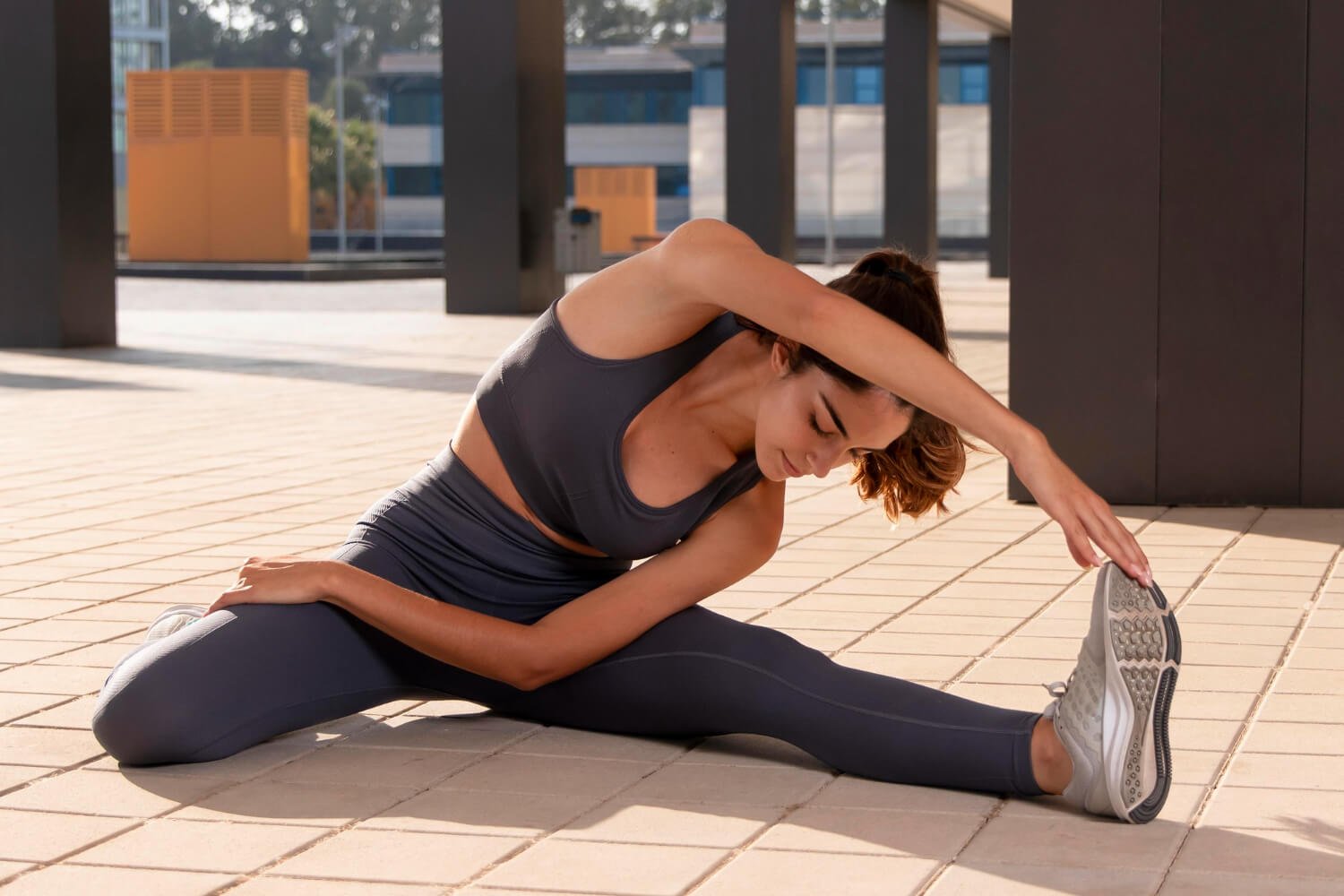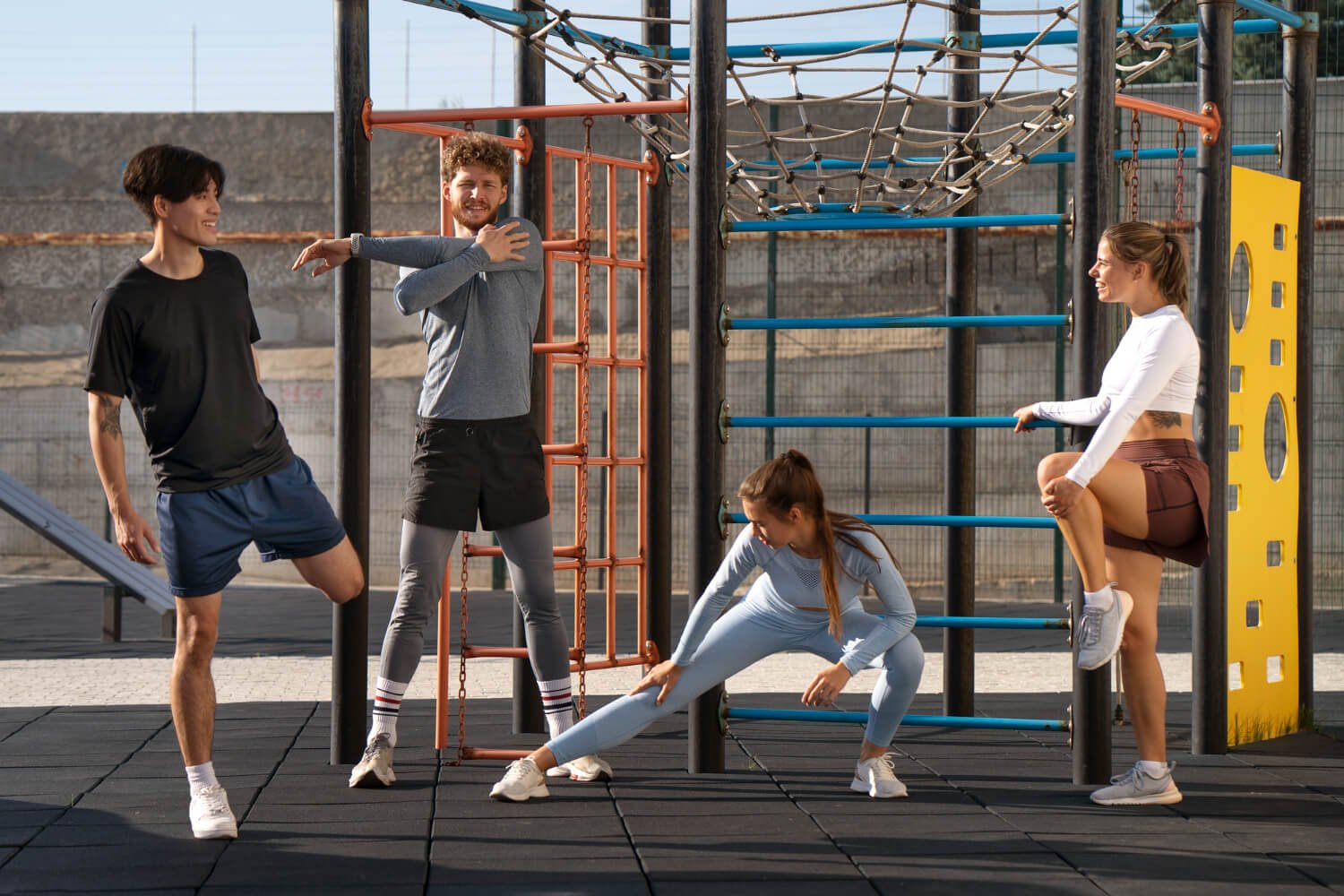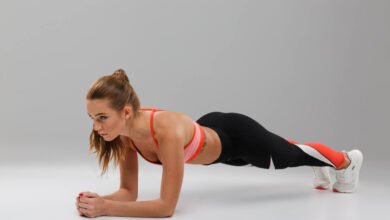How to Stretch After Your Workout (So You Don’t Get Sore)

Welcome to our blog post on how to effectively stretch after your workout to prevent muscle soreness.
Whether you’re a seasoned fitness enthusiast or just starting your fitness journey, incorporating proper stretching techniques into your post-workout routine is crucial for optimizing recovery and minimizing discomfort.
After an intense workout session, it’s not uncommon to experience muscle soreness, which can hinder your progress and make it challenging to maintain a consistent exercise routine.
However, by implementing the right stretching techniques, you can alleviate post-workout muscle soreness and promote faster recovery.
In this article, we will explore the importance of post-workout stretching and its numerous benefits.
We will guide you through various stretching techniques, provide do’s and don’ts to ensure you’re doing it correctly, and offer tips for incorporating stretching into different types of workouts and activities.
By the end, you’ll have a comprehensive understanding of how to stretch effectively after your workouts, allowing you to enjoy the benefits of a more comfortable and fulfilling fitness journey.
But first, let’s dive into the significance of incorporating stretching into your routine and the advantages it brings.
Understanding the importance of post-workout stretching will motivate you to prioritize this essential aspect of your fitness regimen.
So, let’s get started and unlock the secrets to a soreness-free post-workout experience!
Understanding Post-Workout Soreness
After a challenging workout session, you might have experienced that familiar feeling of muscle soreness.
This post-workout soreness, also known as delayed onset muscle soreness (DOMS), can leave you feeling stiff, achy, and sometimes even deter you from continuing with your fitness routine.
Understanding why this happens is essential to tackle it effectively.
DOMS occurs due to microscopic damage to your muscle fibers caused by the stress placed on them during exercise.
When you engage in activities that your muscles aren’t accustomed to or when you push your limits, tiny tears occur in the muscle fibers. This damage triggers an inflammatory response in the body, leading to soreness and stiffness.
It’s important to note that experiencing post-workout soreness is normal, and it typically peaks around 24 to 48 hours after your workout. However, with consistent stretching, you can minimize the severity and duration of DOMS.
Preparing for a Proper Stretching Routine

Before delving into the specific stretching techniques, it’s crucial to prepare your body for a proper stretching routine.
Taking the time to warm up before stretching is essential to increase blood flow to your muscles, improve flexibility, and reduce the risk of injury.
A warm-up can be as simple as five to ten minutes of light cardiovascular activity such as brisk walking, jogging in place, or cycling.
This gentle movement elevates your heart rate, raises your body temperature, and prepares your muscles for the upcoming stretching exercises.
When it comes to stretching, there are two main types: dynamic stretches and static stretches.
Dynamic Stretches
Dynamic stretches involve active movements that mimic the motions you’ll perform during your workout.
These stretches help improve your range of motion, increase blood circulation, and prepare your muscles for action.
Dynamic stretches should be performed in a controlled and fluid manner, without any bouncing or jerking motions.
Some examples of dynamic stretches include:
- Leg swings
- Arm circles
- Walking lunges
- High knees
- Torso twists
Static Stretches
Static stretches, on the other hand, involve holding a stretch in a stationary position for a prolonged period.
This type of stretching is best suited for the end of your workout when your muscles are warm and more pliable. Static stretches help improve flexibility, increase muscle length, and promote relaxation.
Key points to remember when performing static stretches:
- Focus on the muscles you worked during your workout.
- Hold each stretch for 15 to 30 seconds, aiming for a gentle pull without any pain.
- Breathe deeply and relax into the stretch.
- Avoid bouncing or jerking movements, as they can lead to injury.
Effective Post-Workout Stretching Techniques
Now that you’re familiar with the importance of preparing your body for stretching let’s explore some effective post-workout stretching techniques.
These stretches target major muscle groups and promote flexibility, relaxation, and recovery.
Upper Body Stretches
- Shoulder Stretch: Stand tall and reach one arm across your chest. Use your other arm to gently pull the extended arm closer to your body. Hold for 15-30 seconds on each side.
- Triceps Stretch: Extend one arm overhead and bend it at the elbow, bringing your hand behind your head. Use your other hand to gently push your elbow back. Hold for 15-30 seconds on each side.
- Chest Stretch: Stand near a doorway and place your forearm against the door frame, with your elbow at a 90-degree angle. Gently lean forward until you feel a stretch in your chest muscles. Hold for 15-30 seconds on each side.
Lower Body Stretches
- Quad Stretch: Stand tall and grab your ankle with one hand, bringing your heel towards your glutes. Keep your knees close together and avoid arching your lower back. Hold for 15-30 seconds on each side.
- Hamstring Stretch: Sit on the floor with one leg extended in front of you and the other bent. Lean forward from your hips, reaching towards your extended foot. Keep your back straight and avoid rounding your spine. Hold for 15-30 seconds on each side.
- Calf Stretch: Stand facing a wall and place your hands on the wall at shoulder height. Step one foot back, keeping it straight, and press your heel into the ground. Lean forward, feeling the stretch in your calf muscle. Hold for 15-30 seconds on each side.
Core Stretches
- Child’s Pose: Start on all fours and then sit back on your heels, bringing your chest towards your thighs and extending your arms forward. Relax and breathe deeply, feeling the stretch in your lower back and hips. Hold for 15-30 seconds.
- Cat-Cow Stretch: Begin on all fours with your hands under your shoulders and knees under your hips. Arch your back upwards, tucking your chin to your chest (cat pose). Then, drop your belly towards the floor, lifting your head and tailbone (cow pose). Alternate between the two poses for a few repetitions.
Stretching Do’s and Don’ts
While stretching is beneficial, it’s crucial to approach it with proper form and technique.
Here are some do’s and don’ts to keep in mind for an effective and safe stretching routine:
Do’s:
- Do perform stretches after your workout, when your muscles are warm.
- Do hold each stretch for 15-30 seconds, aiming for a gentle pull without pain.
- Do breathe deeply and relax into the stretch.
- Do focus on the muscles you worked during your workout.
- Do stretch both sides of your body equally.
Don’ts:
- Don’t bounce or use jerking movements while stretching.
- Don’t push through pain. Stretching should feel slightly uncomfortable but not painful.
- Don’t hold your breath while stretching.
- Don’t forget to stretch different muscle groups, including your upper body, lower body, and core.
- Don’t skip stretching altogether. Consistency is key for reaping the benefits of stretching.
By following these do’s and don’ts, you’ll ensure that your stretching routine is effective, safe, and enhances your post-workout recovery.
Duration and Frequency of Post-Workout Stretching
Now that you’re familiar with effective stretching techniques, it’s essential to understand the optimal duration and frequency of post-workout stretching.
Incorporating stretching into your fitness routine requires consistency and proper timing to reap its full benefits.
Duration of Post-Workout Stretching
After your workout, aim to spend about 10 to 15 minutes on stretching exercises. This timeframe allows you to thoroughly target different muscle groups and ensure a comprehensive stretching routine.
Remember to focus on both the upper and lower body, as well as the core, to achieve overall flexibility and balance.
During each stretch, hold the position for 15 to 30 seconds. This duration provides sufficient time for the muscles to relax and lengthen. Avoid rushing through stretches and prioritize quality over quantity.
Frequency of Post-Workout Stretching
In terms of frequency, it’s recommended to stretch after each workout session.
By incorporating post-workout stretching into your routine consistently, you can improve your flexibility, reduce muscle tension, and minimize the risk of injury.
Consistency is key to maintain and enhance your flexibility over time.
However, it’s important to note that stretching should not replace other important aspects of your fitness regimen, such as cardiovascular exercise and strength training.
Stretching works synergistically with these activities to support overall fitness and recovery.
Additional Tips for Enhanced Recovery

In addition to post-workout stretching, there are a few extra tips you can incorporate into your routine to further enhance your recovery process.
These tips focus on promoting relaxation, reducing muscle soreness, and supporting overall well-being.
Using Foam Rollers and Massage Tools
Foam rollers and massage tools can be valuable additions to your recovery routine. These tools help release muscle tension, break up knots, and improve blood circulation.
By incorporating foam rolling or using massage tools on specific muscle groups, you can enhance your recovery and alleviate post-workout soreness.
Incorporating Yoga or Pilates for Flexibility and Mobility
Yoga and Pilates are excellent practices that promote flexibility, mobility, and mind-body connection. Consider incorporating these activities into your fitness routine to complement your stretching efforts.
Yoga and Pilates classes or online tutorials provide guided sessions that focus on stretching, strengthening, and relaxation techniques.
The Role of Hydration and Nutrition in Muscle Recovery
Proper hydration and nutrition play vital roles in muscle recovery and overall well-being.
Drink an adequate amount of water throughout the day to support muscle function and prevent dehydration, which can contribute to muscle cramps and stiffness.
Additionally, consume a balanced diet that includes lean proteins, healthy fats, and a variety of fruits and vegetables to provide essential nutrients for muscle repair and growth.
By incorporating these additional tips into your routine, you can optimize your recovery process and ensure a well-rounded approach to post-workout care.
Stretching for Different Types of Workouts
When it comes to stretching, different types of workouts require specific considerations. Let’s explore some general guidelines for stretching based on different workout types:
Stretching Guidelines for Cardio Workouts
For cardio workouts like running, cycling, or aerobics, focus on dynamic stretches to warm up your muscles and increase your range of motion.
Dynamic stretches, such as leg swings, arm circles, and torso twists, prepare your body for the repetitive movements involved in cardio exercises.
Perform these stretches before your cardio workout to enhance performance and prevent injury.
Stretching Considerations for Strength Training
When engaging in strength training exercises, it’s crucial to maintain flexibility and mobility to optimize your movements and prevent muscle imbalances.
Incorporate both dynamic and static stretches into your routine.
Before your strength training session, perform dynamic stretches that mimic the movements you’ll be doing during your workout.
For example, if you’re planning to do squats, warm up your hips and legs with dynamic leg swings.
After your strength training workout, focus on static stretches to lengthen the muscles you’ve worked.
Pay special attention to the muscle groups targeted during your workout. Stretching the chest, shoulders, back, legs, and core can be particularly beneficial.
Stretching After High-Intensity Interval Training (HIIT) Sessions
HIIT workouts involve intense bursts of exercise followed by short recovery periods.
Since HIIT workouts often engage multiple muscle groups and require explosive movements, it’s important to include both dynamic and static stretches in your routine.
Before starting your HIIT session, warm up with dynamic stretches such as jumping jacks, high knees, or walking lunges. These stretches prepare your body for the high-intensity movements to come.
After your HIIT workout, cool down with static stretches that target major muscle groups.
Focus on stretches for your legs, core, and upper body. This cooldown stretching routine helps reduce muscle tension and promotes recovery.
Stretching for Specific Sports and Activities

In addition to different workout types, various sports and activities require specific stretching techniques to support performance and prevent injuries.
Let’s explore stretching routines for a few common sports:
Stretching Routines for Runners
Running puts stress on the legs, particularly the calves, hamstrings, and quadriceps. To prepare for a run, perform dynamic stretches such as leg swings, walking lunges, and high knees.
After your run, focus on static stretches that target the major muscle groups involved, including the calves, hamstrings, and hip flexors.
Stretching Exercises for Weightlifters
Weightlifting relies heavily on strength and stability. Before your weightlifting session, perform dynamic stretches that activate the muscles you’ll be working.
Examples include arm circles, shoulder rotations, and bodyweight squats.
After your weightlifting workout, focus on static stretches for the major muscle groups involved, such as the chest, shoulders, back, legs, and core.
Stretching Techniques for Cyclists and Swimmers
Cycling and swimming engage specific muscle groups and require a good range of motion.
Cyclists should focus on stretches for the quadriceps, hamstrings, hips, and lower back. For swimmers, stretches that target the shoulders, upper back, chest, and hips are beneficial.
Tailor your stretching routine to your specific sport or activity, considering the muscles used and the range of motion required. This helps improve performance, prevent injuries, and maintain flexibility.
- Read Also: How to Do a Plank for 30 Seconds: A Beginner’s Guide
- Read Also: The Healthy Diet for Athletes: What to Eat to Fuel Your Performance
- Read Also: What is HIIT and How Can It Help You Lose Weight?
- Read Also: The Ultimate Guide to Losing Weight with Exercise
Conclusion
Congratulations! You’ve reached the end of our comprehensive guide on how to stretch after your workout to prevent muscle soreness.
By incorporating post-workout stretching into your fitness routine, you can optimize your recovery, enhance flexibility, and reduce the discomfort associated with muscle soreness.
We started by understanding the nature of post-workout soreness, also known as delayed onset muscle soreness (DOMS).
We explored how microscopic damage to the muscle fibers during exercise leads to soreness and the role stretching plays in minimizing its effects.
To prepare for a proper stretching routine, we highlighted the importance of warming up before stretching and discussed dynamic and static stretches.
Dynamic stretches help increase blood flow and range of motion, while static stretches focus on holding positions to improve flexibility.
We then delved into effective post-workout stretching techniques, covering stretches for the upper body, lower body, and core.
Remember, these examples are just the tip of the iceberg. Explore different stretches that target your specific needs and consult with a fitness professional if needed.
To ensure a safe and effective stretching routine, we provided essential do’s and don’ts, emphasizing the importance of proper form, breathing, and consistency.
We discussed the optimal duration and frequency of post-workout stretching, recommending around 10 to 15 minutes of stretching after each workout session to maintain flexibility and promote recovery.
In addition, we provided additional tips for enhanced recovery, including the use of foam rollers and massage tools, incorporating yoga or Pilates for flexibility and mobility, and the role of hydration and nutrition in muscle recovery.
We addressed the importance of tailoring your stretching routine to different workout types and specific sports or activities, providing guidelines for cardio workouts, strength training, HIIT sessions, as well as stretching routines for runners, weightlifters, cyclists, and swimmers.
By incorporating these practices into your fitness journey, you’ll not only minimize post-workout soreness but also enhance your overall performance and well-being.
Remember, consistency is key. Make post-workout stretching a regular part of your fitness routine to experience the full benefits. Enjoy the journey of becoming more flexible, resilient, and comfortable in your body.
Here’s to a soreness-free and fulfilling fitness journey!
FAQs
How do you stretch so you don’t get sore?
Stretching after your workout can help prevent muscle soreness. Perform a combination of dynamic stretches before your workout to warm up your muscles and static stretches after your workout to cool down and improve flexibility. Focus on the major muscle groups you worked during your exercise routine.
Does stretching after a workout prevent soreness?
Yes, stretching after a workout can help prevent muscle soreness. It improves blood flow, reduces muscle tension, and promotes faster recovery. Incorporating post-workout stretching into your routine can minimize the severity and duration of post-workout muscle soreness.
Should I stretch immediately after a workout?
Yes, it’s beneficial to stretch immediately after a workout. Stretching while your muscles are warm can enhance flexibility, prevent stiffness, and aid in the recovery process. Perform static stretches for the major muscle groups you worked during your workout to promote relaxation and reduce post-workout soreness.
Why am I always sore after working out?
Muscle soreness after working out is normal and is known as delayed onset muscle soreness (DOMS). It is typically caused by microscopic damage to muscle fibers during exercise. This damage triggers an inflammatory response, leading to soreness and stiffness. With consistent exercise and proper recovery techniques like stretching, your body will adapt and become less prone to soreness over time.
What happens if you don’t stretch sore muscles?
If you don’t stretch sore muscles, they may remain tight and prone to further injury. Stretching helps relieve muscle tension, improve flexibility, and promote blood circulation, which aids in the recovery process. Neglecting to stretch sore muscles can prolong the recovery time and potentially lead to imbalances or decreased range of motion. It’s important to listen to your body and prioritize proper recovery techniques like stretching to support muscle health and prevent future discomfort.




